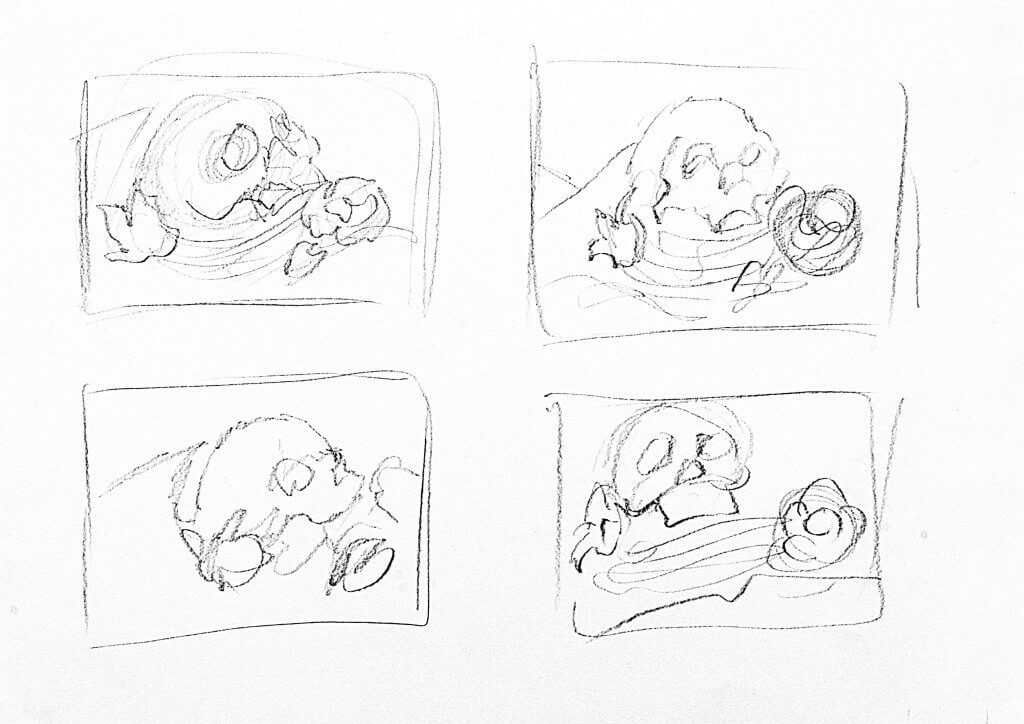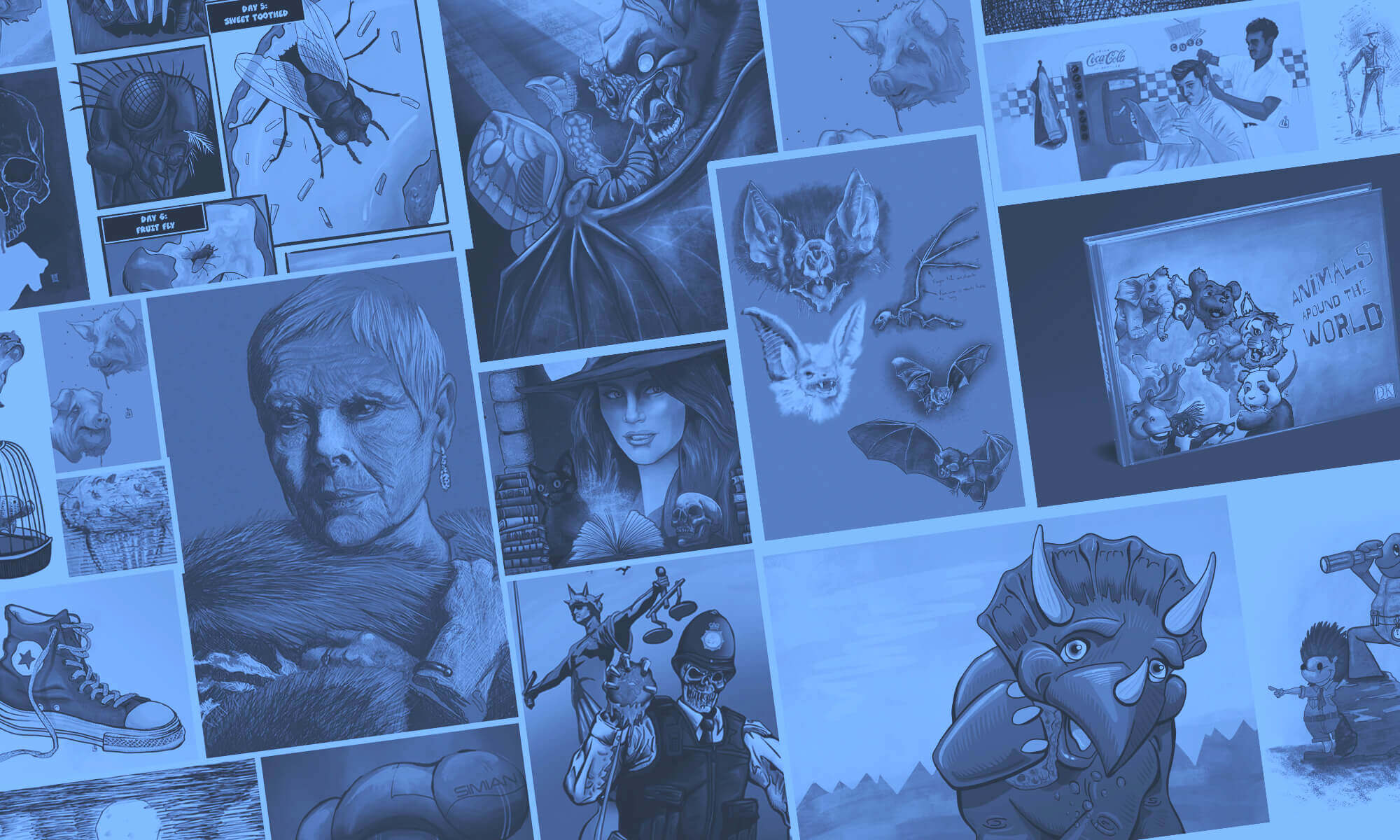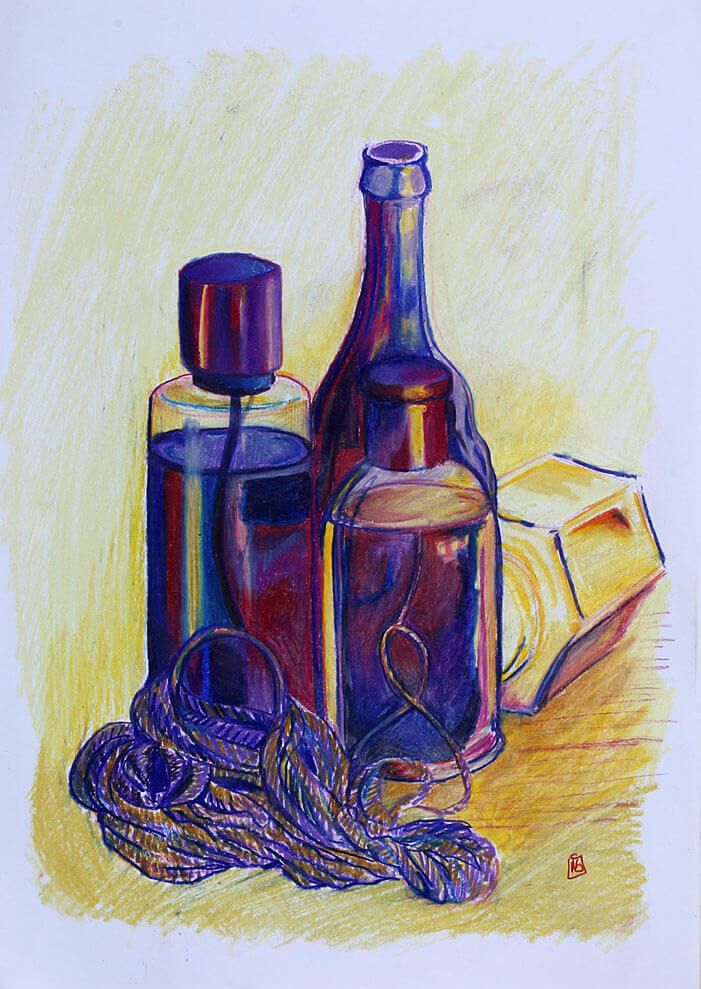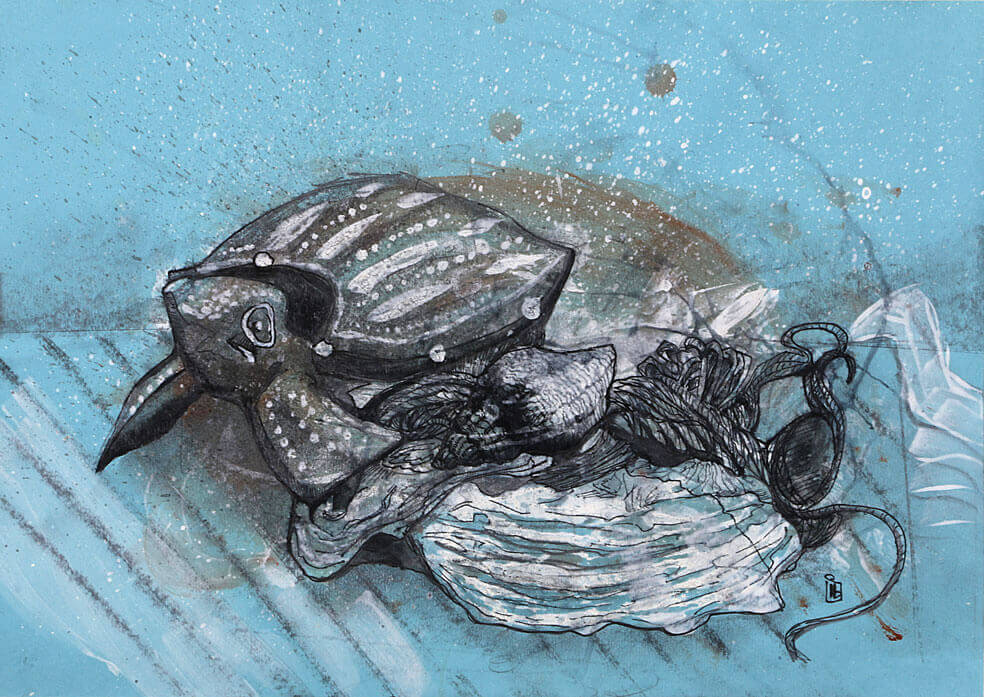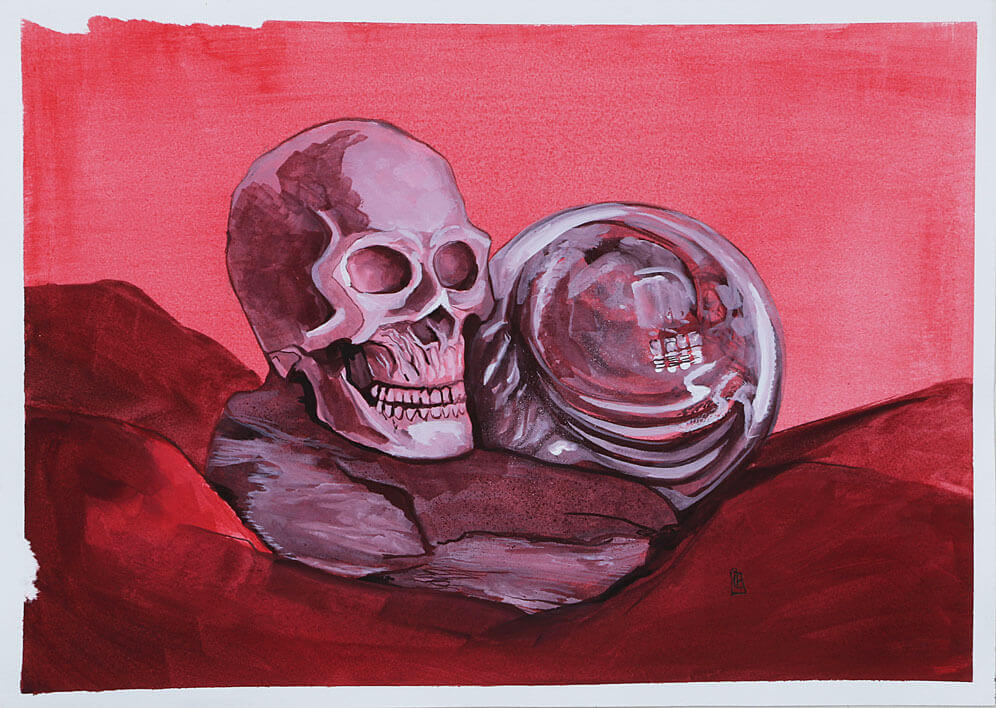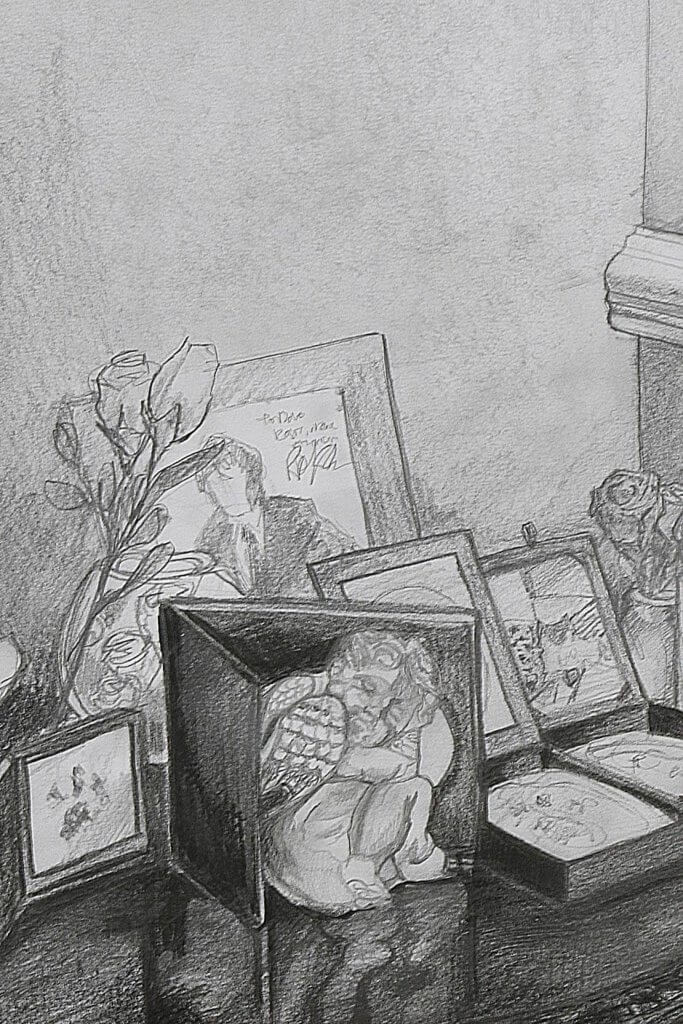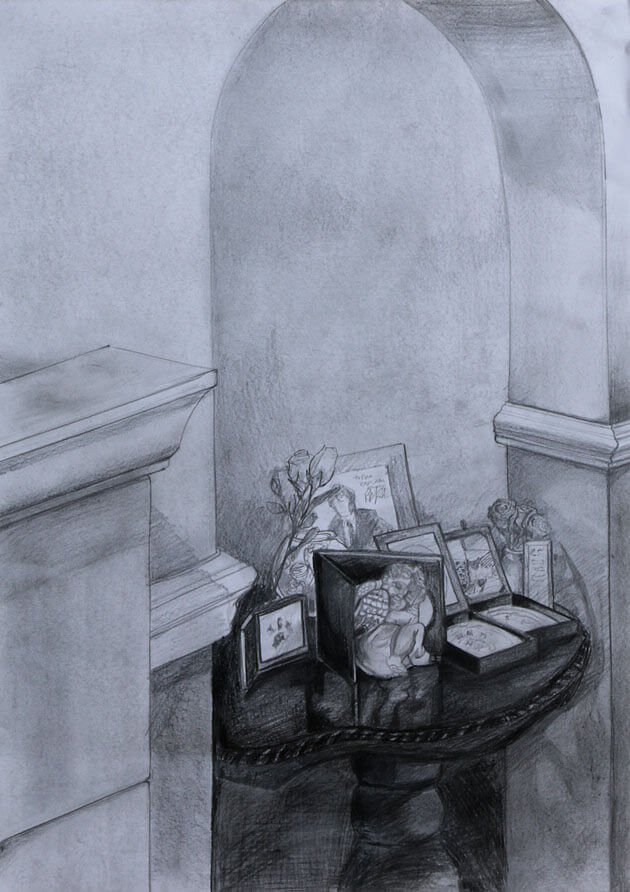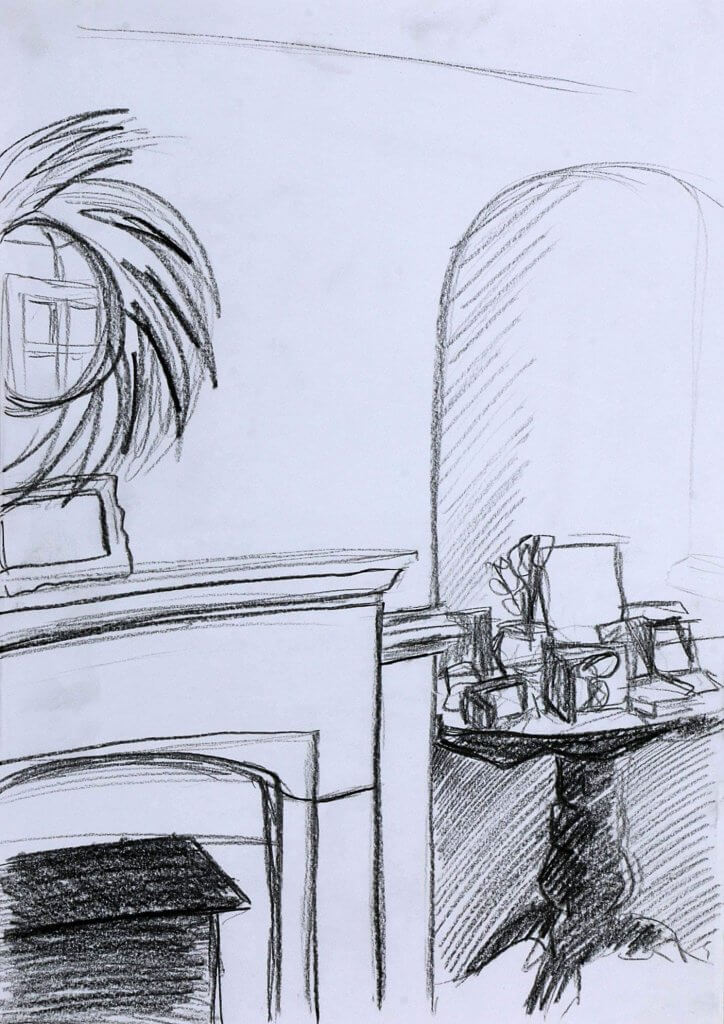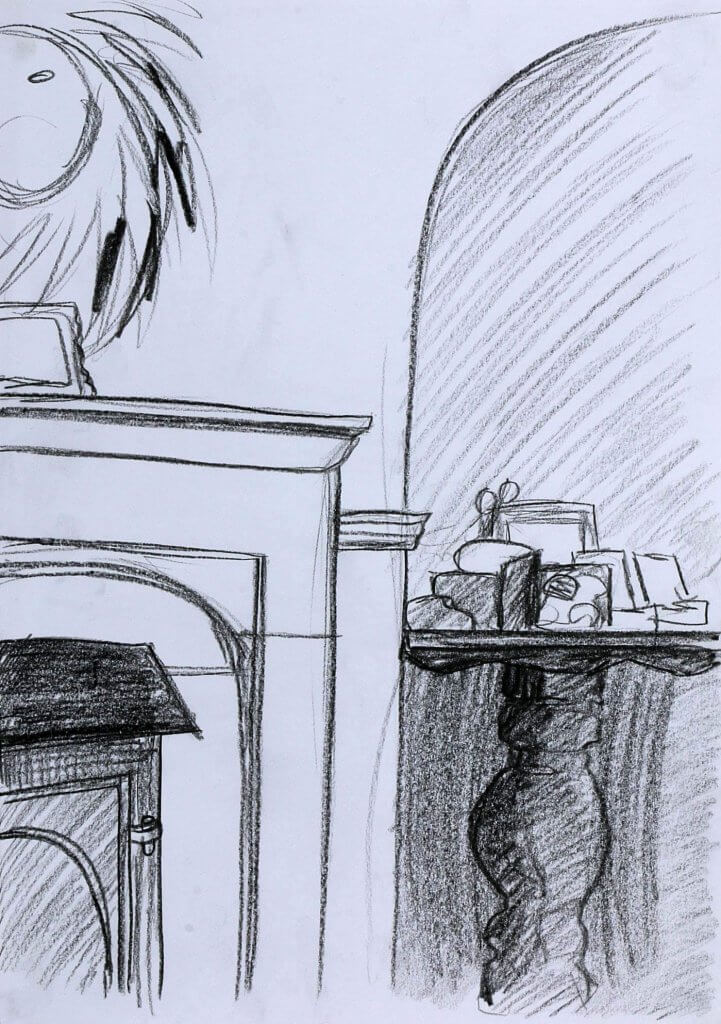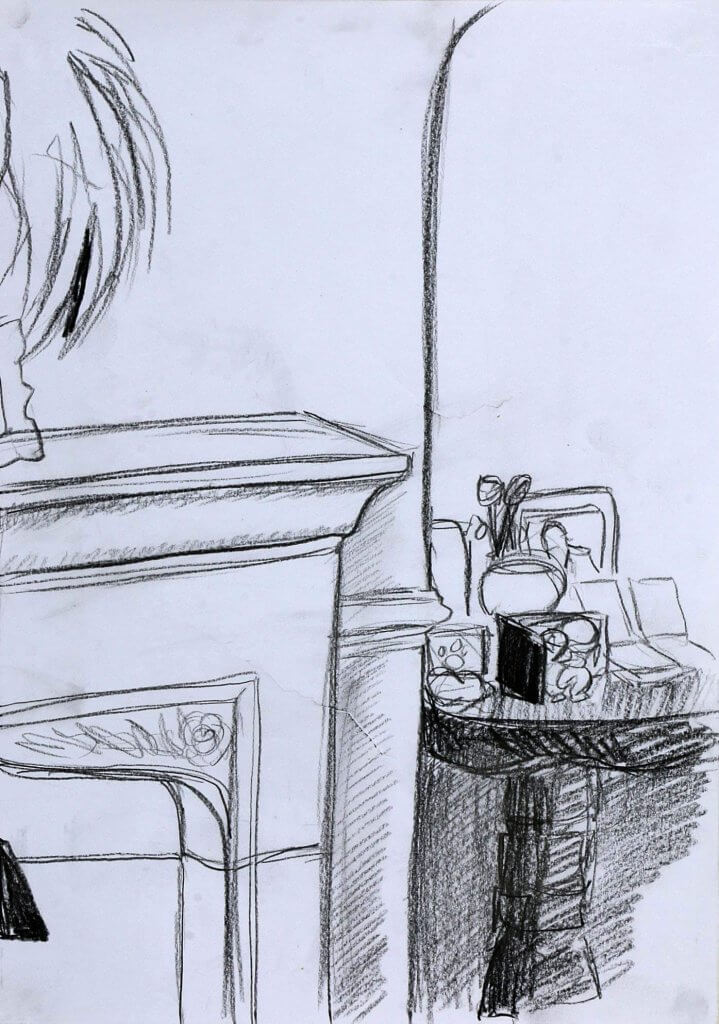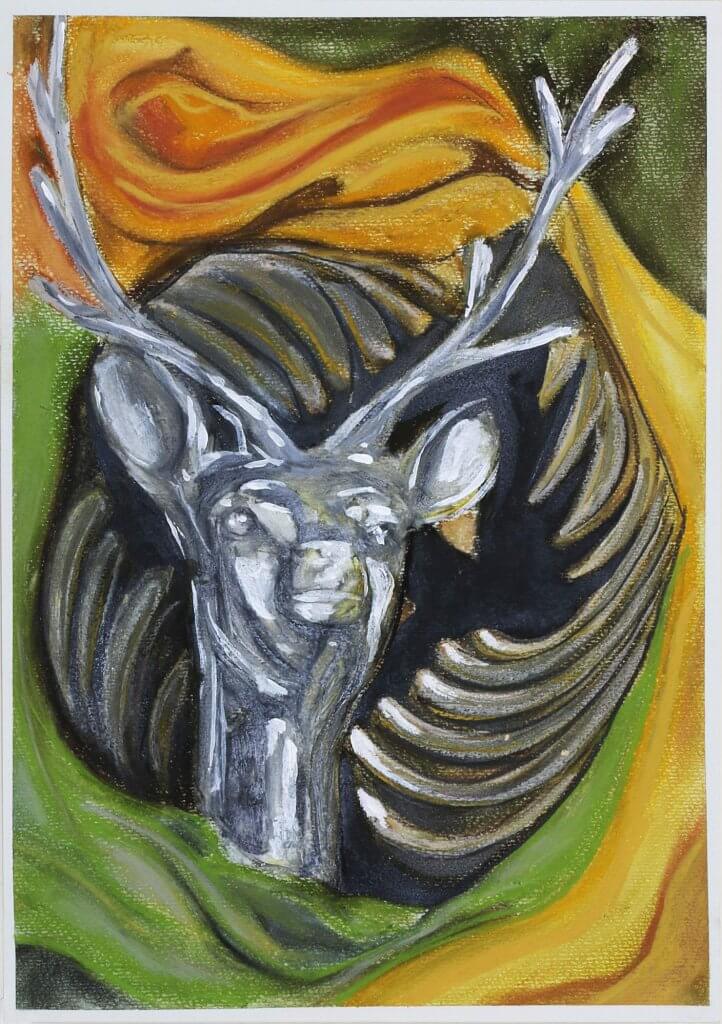I put together a still life trying to find objects that are round or curved, I found a plastic skull I use for reference some coiled line and some dried flowers from a bowl of pot pourri. I made for sketches to choose an interesting composition.
Using a dip pen and black Indian ink I started to sketch directly to the paper, it didn’t specify if I could or should do an under drawing. It certainly was a test of my mettle as I bravely made marks with no underlying suggestion of the composition. The dip pen is a tool that I’d love to invest more time in, it has an amazing variation of line weight but it also has a pretty steep learning curve, I did end up with an unwanted blob of ink and the odd smudge.
This was to be an exercise in texture pattern and shape using line only, I managed to resist blocking in black areas and tried to focus on line weight to describe depth and shadow. The drawing didn’t come out quite as I hoped, I want to try it again with a light under drawing to make sure my composition is a little more thought out, this time I will try a brush pen and really focus on the weight and direction of my line. I think the brush pen will be a little more intuitive for me even though it’s not my go to method to disperse ink, that would be a fine liner pen, so this exercise will be a valid introduction into brush markers.
I restarted the drawing this time using a soft pencil to gently outline the composition, I wanted to ensure I had some interesting tangents in my lines, and some of the items cutting through other shapes i’m hoping this should make a more interesting end result.
Once I was happy with the layout I gently rubbed the lines out so there is just a very faint guide to follow with my Pentel brush pen.
The brush pens main benefits is a continuous supply of ink with the wide range of line weight. The brush isn’t as firm or stiff as the metal nib of a dip pen so a lighter touch is definitely required to make the most of the potential range. Another consideration with the brush is direction, it does produce the best intentional line when pulled, a characteristic that doesn’t exist with a fine liner. I start by making very light strokes, and open the bristles of the brush with some pressure where i want to convey depth such as the plastic skulls eye sockets and nose, I also try to make the lines heavier around some of the pot pourri that is darker in colour with an attempt at ensuring the focal point is on the left side of the image. Overall I am much happier with this image, its seems less messy and a little more informed, although looking at the first attempt again there is some things I like about it, the texture for one seemed a bit more interesting.
